Amazing Animals #26 The Kodiak Bear
It's been a while since we covered the Polar Bear so I feel it's time to cover the animals they are thought to have diverged from roughly 150,000 years ago, the Brown Bears.
Aside from the Polar Bear, Brown Bears are the next largest species of Bear on the planet, their formidable size has often been highlighted in movies and it's safe to say that they are a popular and well known animal on a global scale.
The zoological collection I work with doesn't include any Brown Bears so I can't comment on their behaviour personally, but from the Bears I have seen at other collections it's easy to see that they are intelligent, playful and generally curious of their surroundings, the Bear I've chosen to highlight today is the largest of the Brown Bears and is endemic to a region i'd desperately like to visit, Alaska.
Description and Distribution
The Kodiak Bear (Ursus arctos middendorffi) is one of at least two subspecies of Brown Bear found in North America, I say at least two because scientists are still discussing whether various other subspecies are in fact distinct from the two-confirmed subspecies which are Ursus arctos middendorffi (Kodiak) and Ursus arctos horribilis (Grizzly).
The Kodiak Bear is considered to be the largest subspecies of Brown Bear alive today and can even grow to the same size as their distant relative, the Polar Bear, Kodiak Bears are ranked as the largest extant terrestrial carnivore, this is due to the fact that Polar Bears are the only Bear that is classed as a marine mammal.
I’ve never seen a Kodiak Bear in person, but from images it isn’t hard to gain an understanding of their size, like all subspecies of Brown Bear they are sexually dimorphic and males are considerably heavier, larger and more muscular than females which gives them a more robust appearance, male Bears are referred to as “Boars” and females are referred to as “Sows”.
On average male Kodiak’s grow to 2.5 metres in length and have a shoulder height of 1.35 metres, Bears this size normally have a weight range of 470-540 kg’s throughout the course of a year, we’ll discuss their weight fluctuations later in the article, in general females are roughly 20% smaller in size and 30% lighter than males, larger than average males can reach up to 750 kg’s in the wild.
They have the largest skull of any Bear subspecies with the largest ever recorded being 78.1 cm’s in total size, total size is calculated by combining the measurements taken from the front teeth to the back of the sagittal crest, and the distance between the cheekbones, Kodiak Bears this size are a rarity as hunting has likely reduced the possibility for Bears to reach extreme sizes.
As you might imagine, their paws are gigantic and can often measure over 30 cm’s long and 24 cm’s wide with the largest ever recorded measuring 46 cm’s in length! The pads on the paws are large and thick which enables the Bears to walk easily on rough terrain, on each paw they possess five long, blunt claws that are typically curved downwards and may measure up to 10 cm’s in length, as the claws are blunt the Bears are not able to easily climb trees in the same manner than Black Bears can, the claws are more used for digging and come in handy when excavating a Den.
As a subspecies of Brown Bear they have a distinctive hump at the top of their shoulders, this hump is easily noticeable in larger Bears and is comprised entirely of muscle, this muscular structure allows the Bears to exert an incredible amount of force when digging which further enables their blunted claws to work effectively.
Aside from their size the Kodiak Bear is not too dissimilar from their close relative the Grizzly Bear (Ursus arctos horribilis), the colouration of their pelage is almost identical once matured and ranges from shades of orange, blonde and most commonly, dark brown, the length of their fur is dictated by geographic/seasonal changes, in the summer their coat is short and may appear sparse in some areas, the winter coat on the other hand is much denser and can grow to lengths of 10-12 cm’s around the shoulders (withers), the fur is surprisingly rough to touch despite its soft appearance.
Kodiak Bears are native only to the islands that make up the Kodiak Archipelago, the Kodiak Archipelago is a large island chain located to the south of mainland Alaska, the islands are quite mountainous and are predominantly covered in forested land, though many freshwater streams are also present and there are thought to be at least 40 small glaciers across the islands, aside from the glaciers this is the perfect terrain for the Kodiak Bear to thrive.
The islands themselves comprise roughly 14,000 square kilometres of land and the density of Kodiak Bears is 270 individuals per 1000 square kilometres, this gives an approximate population of 3780 animals, whilst this doesn’t sound like an overly large number of Bears the population is healthy and thought to be on the rise, this is due to the remote location of the islands and the stringent hunting rules / quotas in place.
Behaviour & Diet
Like most Bears, the Kodiak Bear is a predominantly solitary animal, despite this there is still a dominance hierarchy present that becomes noticeable during several social situations, the first arises when feeding.
During the summer months when food is plentiful large numbers of Bears may congregate to a small area, larger mature males will claim control of the best spots within a location and they will defend their claimed territory from competitors, more often than not a combination of body posturing and varying vocalisations is enough to solve a dispute, using their seemingly complex communication skills they are able to avoid unnecessary injuries or fatalities that are present in other solitary carnivores, namely big Cats.
The other most common indication of a dominance hierarchy can be observed during the mating season, the mating season runs from May-June and in that time males will compete with one and other for the right to breed with a female, Kodiak Bears are monogamous which means that only the strongest of Bears are able to breed, in this aspect the conflicts are much more likely to yield serious injury than those observed in the feeding grounds.
As subspecies of Brown Bear their general behaviour is largely similar to other Bears in the northern hemisphere in that they are solitary, they gorge-feed during the summer months to gain significant weight, and they construct a den for hibernation over the winter months.
They have quite small home ranges, the smallest of any Brown Bear in North America, the home range for males is roughly 250 square km’s and the females is roughly 130 square km’s, due to these small home ranges geographic overlap is inevitable and Bears are not territorial over their range, they will also often choose to den in the same location every year, the location of the den is usually burrowed in to the mountain side or the side of a hill, though they may also Den on Tundra if the other habitats are not present.
Strangely approximately 25% of all Kodiak Bears are thought to forego denning and opt to remain active during the winter, it is unclear whether this behaviour has existed for a long period of time or if it has only become present since the human population on the island has increased which has subsequently increased the amount of waste food available for the Bears.
When observing their formidable size, you might be tricked in to believing that anything living on the islands of Kodiak will be living in constant fear of a hungry Kodiak Bear, but this isn’t really the case, instead the Bears have quite a well-established and routine diet that enables species such as Deer and Mountain Goats to live in relative peace.
This is not to say that Kodiak Bears will not prey on them, the Bears are primarily opportunistic feeders and will eat any meat that is presented to them, the difference is they have not been observed to actively hunt these species, as long as the animals keep their distance the Bear is unlikely to show any interest in them, the general feeding routine of the Kodiak Bear is dependent on seasonal change.
For Bears that opted to hibernate over the winter months they will need to find food in the Spring as soon as possible, hibernating Bears may lose up to 50% of their fat reserves during the hibernation period which can last as long as five months, freshly awoken Bears take advantage of the many animals that were unable to survive the winter by scavenging in the Spring whilst also feasting on the rejuvenated vegetation.
As Summer beckons the feeding opportunities for the Bears increases exponentially and up until this point they will be sustaining themselves largely on a herbivorous/frugivorous diet (up to 80% of all food), during this period they are simply biding their time for the return of the Pacific Salmon to the streams of Kodiak.
Back in December I wrote an article about the great migration of various Salmon species, it is this great migration that accounts for the largest portion of the Kodiak Bears diet during the Summer months, the quantity of Salmon that arrive will subsequently dictate the health of the Bears when returning to hibernation in late Autumn, during the Summer months Kodiak Bears may gain as much as 200 kg’s in fat.
As Summer turns to Autumn the Salmon are all but gone and the Kodiaks diet switches back to a largely frugivorous diet, they gorge on the plentiful array of berries present throughout the Kodiak archipelago and will have hopefully gained back all of the weight that they lost prior to hibernation, providing their environment remains stable this sequence will repeat itself for 20-30 years throughout a Bears natural lifecycle.
Intelligence
The concept of intelligence is quite difficult to gauge in animals, it’s difficult to gauge whether or not the behaviour being exhibited is due to intelligence or simply due to basic instincts, in my view intelligence at a fundamental level is not merely the ability to learn and develop but the ability to perform behaviours naturally free from external inputs, the ability to develop cognitive abilities on their own.
This is why I feel many animals are far more “intelligent” than they are given credit for, case and point being my wonderful Goat Basil who has learnt a hidden language (A basic version of Sign) which he understands to a level that he’s able to perform behaviours on command, this is by no means an anomaly, almost any animal can be trained be they a simple Goldfish, a Dog, a Lizard or in the case of this article, a Bear.
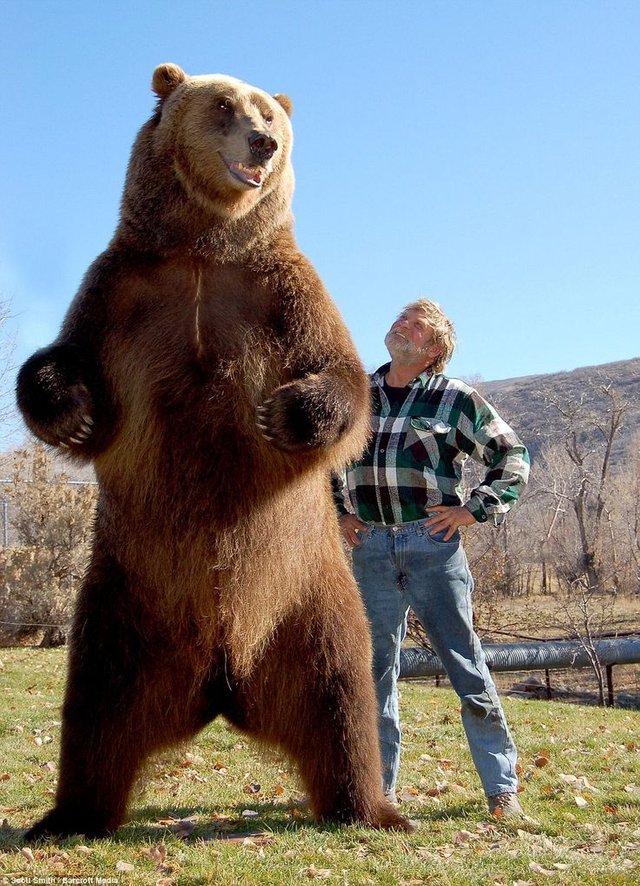
Bart the Bear, a captive Bear hand-reared from a Cub is capable of performing a number of behaviours
I’m sure at some point in your life you’ve watched a movie and seen a giant Bear standing on his hind legs and letting loose an all mighty roar, in some cases this is CGI but in many that is an actual Bear that his been trained to perform that behaviour, Bears are in fact very active learners and they will take in information at the same rate that can be observed in animals such as Dogs and basic Primates, I’m a firm believer that most animals are trainable so long as you use a reward-praise system, the tricky part is finding a reward that keeps them motivated!
In the wild these behaviours you may have seen on the silver-screen are of course not natural behaviours, and if you had to ask me whether I feel it’s ethical to tame and train an apex predator such as the Kodiak Bear I’d probably lean towards no, that’s not to say they’ve been mistreated in any way, most animal trainers love their animals more than they love the people around them, there’s just something about your head fitting comfortably in an animals mouth… leaves me a little bit uneasy.
Aside from their ability to learn from us, studies on their behaviours in the wild have yielded some surprising results, the most intriguing to me comes in the fact that they use tools to forage as well as for leisurely tasks, a Bear was spotted searching through rocks until it eventually found one which had an underside encrusted in Barnacles, the Bear clearly observed the rock thoroughly before orienting the Barnacles in a way that it could use the rock to itch itself, thus displaying a basic example of tool use which is generally only observed in animals with considerable motor skills and cognitive ability.
Researchers speculate that further controlled studies would likely show the Bears to have a similar cognitive ability to that of a Primate and this is largely based around the fact that Brown Bears have the largest Brain in proportion to body size of any carnivore, whilst further studies are required they must be completed ethically, and believe it or not conducting controlled studies on a significant population of 600+ kg Carnivores is easier said than done, however I’m confident more will be learnt in the coming decades.
Amazing Facts
The largest Kodiak Bears can stand over three metres tall when taking a bipedal stance.
Like many animals that fair well in captivity, they often reach sizes and weights that would be otherwise unattainable in the wild, the largest captive Kodiak Bears have weighed over 1000 kg’s, the oldest Bear in captivity was a female named Bethyl who lived to 35 years of age.
The subspecies has been isolated on the Kodiak Archipelago for at least the past 12,000 years, physiologically they are very similar to mainland North American Brown Bears, the key difference is merely their size.
For such large animals they are surprisingly fast, mature males can achieve short bursts of speed topping out at between 35 to 40 miles per hour, this is why people are not advised to turn their back and run when confronted by a Bear, you cannot outrun a Bear on any terrain.
Like their Polar cousins they are adept swimmers and can swim for prolonged periods of time with relative easy.
Cubs are born in January / February and the average litter consists of 2-3 cubs, on average they weigh just 0.5 kg’s, they remain in the Den for several months and may gain more than a kilogram in weight per day, the most common cause of mortality in infants is cannibalism from large male Kodiak Bears, Cubs stay with their mother for 2.5-3 years.
They are quite shy and reclusive; most Bears will actively avoid human confrontation and the majority of encounters can be attributed to disposed Human food or recently killed game-meat.
In abnormal cases some Bears may hibernate for as long as eight months, this behaviour has actually peaked the interest of NASA who are interested in studying how the Bears are able to forego eating, drinking and defecating for such long periods of time whilst also retaining muscle tone and bone mass.
Content Sources
More Amazing Animals
If you enjoyed this article you may enjoy some of the previous animals I have covered!
- The Jumping Spiders
- The Ocean Sunfish
- The Leatherback Sea Turtle
- The Fruit Bats
- The African Elephant
- The African Lion
- The Arctic Fox
- The Peregrine Falcon
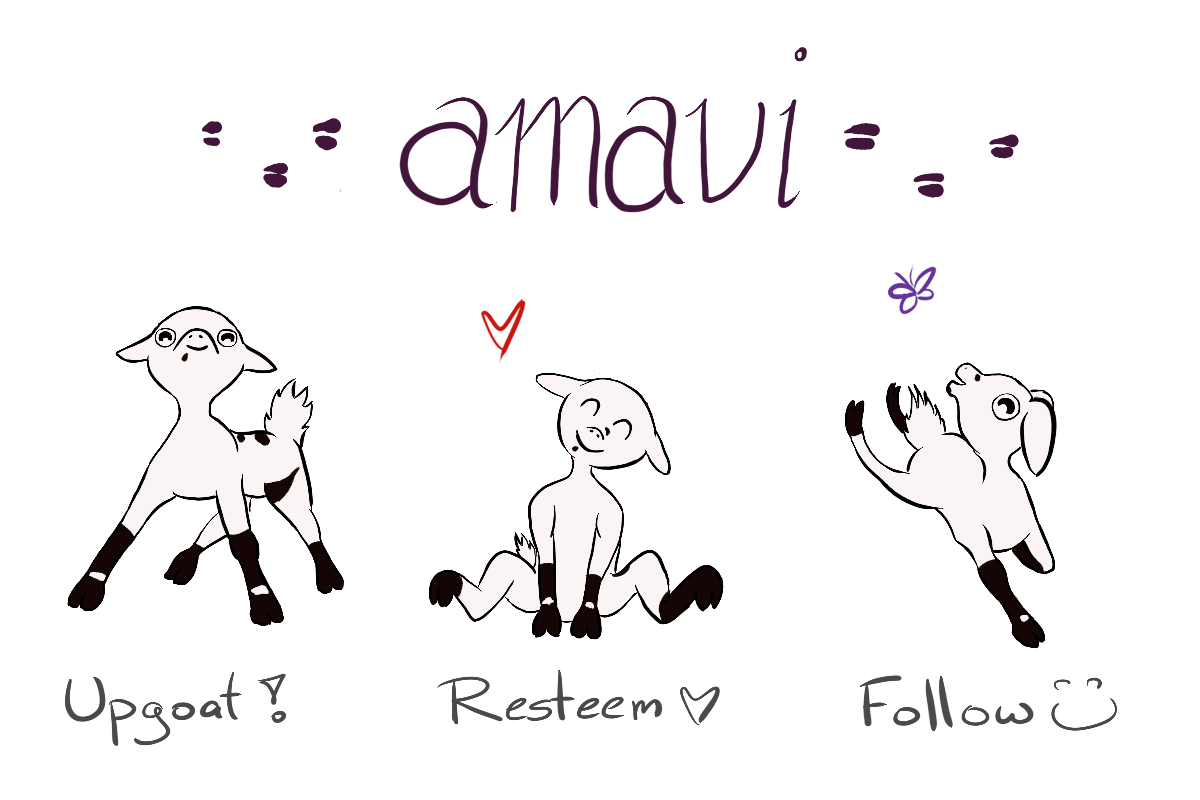
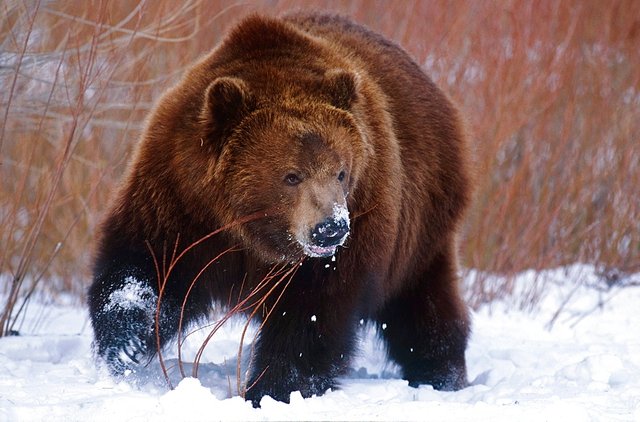
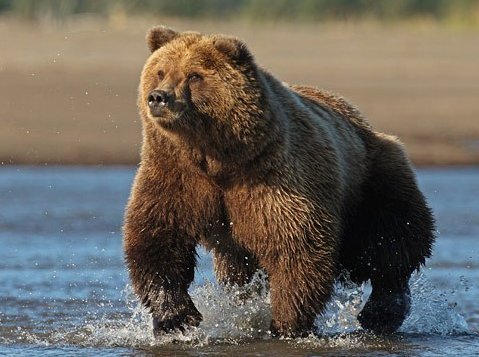
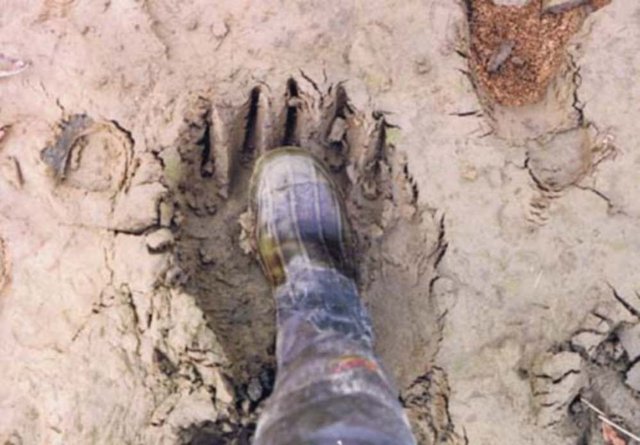
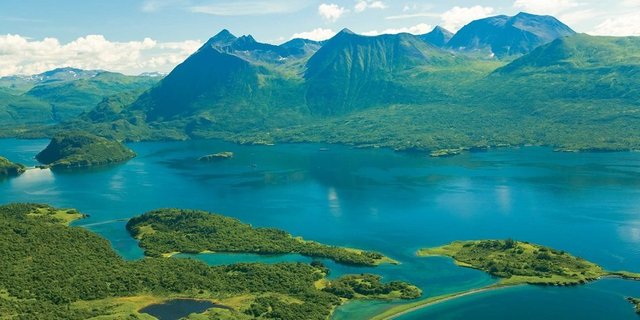
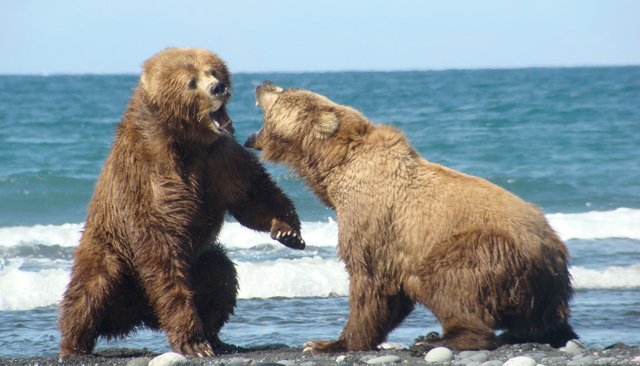
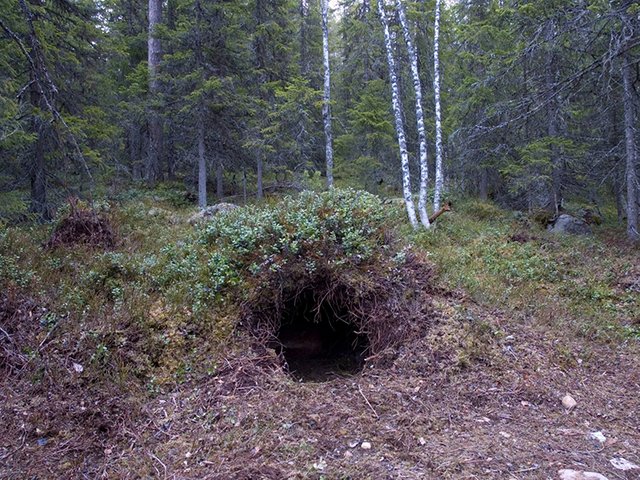
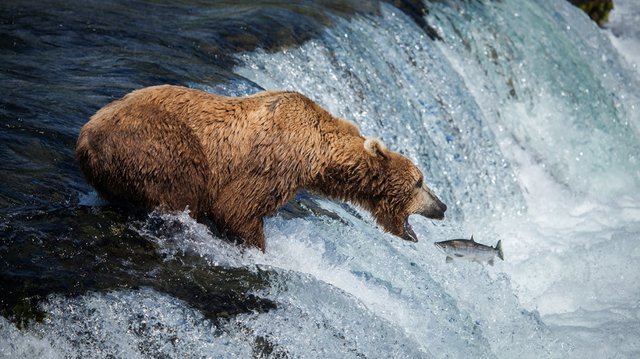
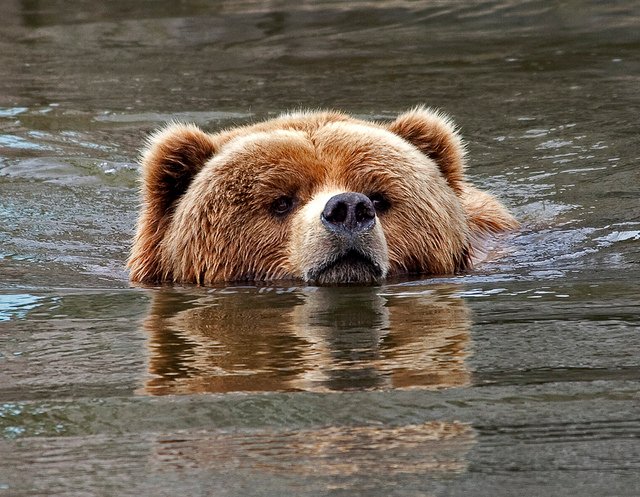

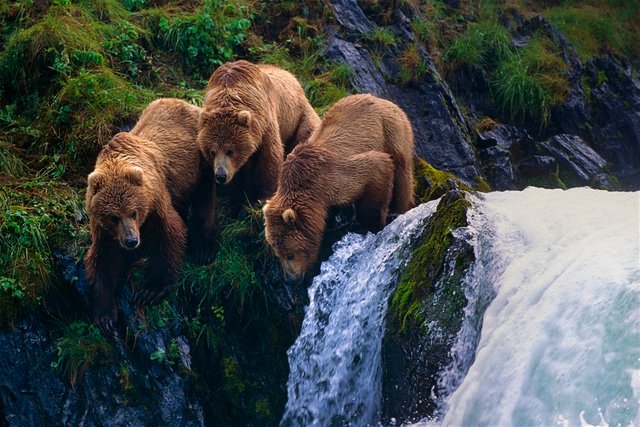
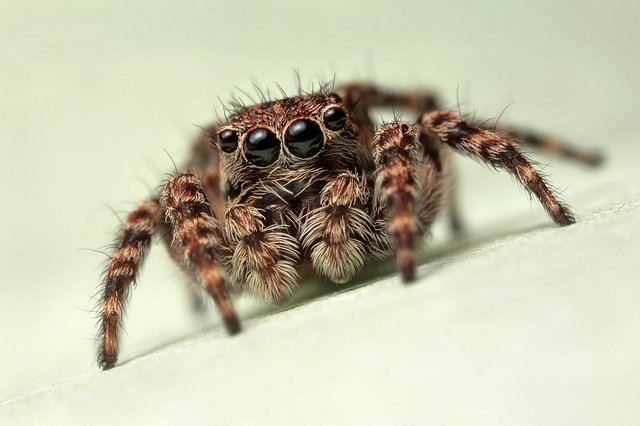
Being A SteemStem Member
So big and scary, but so beautiful. Thank you!
I wish i could double up-vote. I love bears ♡
Re-steeming
Resteemed to over 14700 followers and 100% upvoted. Thank you for using my service!
Send 0.200 Steem or 0.200 Steem Dollars and the URL in the memo to use the bot.
Read here how the bot from Berlin works.
We are happy to be part of the APPICS bounty program.
APPICS is a new social community based on Steem.
The presale was sold in 26 minutes. The ICO will start soon.
Read here more: https://steemit.com/steemit/@resteem.bot/what-is-appics
@resteem.bot
I like the bear, but the puppets only. if my real bear is afraid, because of their big body.
Uncommon and powerful animal, intelligent and beautiful, to see but well from afar.
That photo of the man standing behind the bear shows how big these animals are! Great post.
:D
wow... natural post and fowerful animal
Greetings from Poland!